I have learned a few more things over the past month or so about what I did right – and what I didn’t do, at all – when I built my new chicken/duck coop last summer.
The main one being not installing a deflector of some kind to keep the ducks from squirting their ejecta on the lower parts of the wood siding. Which is wet with their ejecta. Which will accelerate the rotting of the siding if not deflected.
Ducks, unlike chickens, squirt. Powerfully. Abundantly. Chickens have the virtue of dropping their stuff, so it usually just falls (vertically) wherever they happen to be standing when nature calls. If they are on straw bedding when this happens, the straw absorbs it and you sweep it out every so often. I hadn’t thought about the ducks when I laid out the coop’s insides.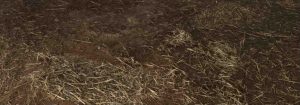
Now I know – and (weather permitting) this week will install countermeasures, in the form of those deflectors mentioned above. Just a few sheets of OSB scrap, mounted at an angle from the concrete floor to the T1-11 siding at a height just above the elevation of the ducks’ cannons. These can take the hit – and more to the point – are easily replaced as necessary much more easily and cheaply than pulling the siding.
You will also need more straw – more often – if you decide to have ducks. They are wonderfully interesting, personable and tasty birds. But they are truly dirty birdies who poop almost as often as they quack. And now you’ll need a place to store that hay. If you don’t – if you just leave it outside – it is likely it will get wet. Keeping the interior of your coop dry is important – for the health of the birds and the longevity of the structure. If it gets and stays wet inside, it is likely you’ll be building a new coop sooner rather than later.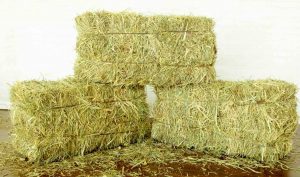
I have a shed adjacent to the coop where I store hay – for now. But I do not intend to store it there for long because it takes up space needed for other things and it makes a mess in there, too. For this reason, I am going to add a hay bin near the coop, which will keep it dry and handy.
I did get the coop wired – just in time. December here in the Woods was deceptively summery, with daytime temps sometimes well into the 70s and few days that got much colder than the 40s. Then January came. It got very cold, very quickly. Highs in the low 20s and lows in the pre-teens. Having electricity in the coop to power a heater probably saved my birds from freezing to death. I could have run an extension cord, of course – but being able to just plug in the heater is a real luxury.
But I found that even with power, water will still sometimes freeze. Even if in a heated bucket. Not all of it – just the surface, like a frozen-over pond. But it might as well be frozen solid as far as the birds being able to peck through it, to get a drink. Because of that, I had to trudge outside every morning – in the 13 degree cold – to bring hot water to the birds. A more powerful water heater may be the solution. I am also considering burying the heated bucket so that it is shielded by the earth and we’ll see whether that works.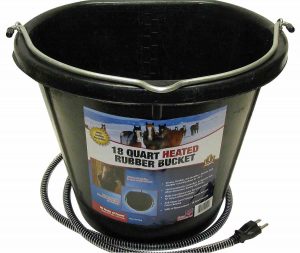
The other thing I did – and was glad I had – was to build a sheltered (overhead) run for the birds. Not so much because of the threat of hawks but rather the threat of snow. If I hadn’t used some of the extra tin roofing I had on hand to build a covered run appx. ten feet long by five feet wide, the birds would have had trouble exiting the coop – after we got a foot-plus of heavy snow. Cooped up like that for days/weeks on end would likely have resulted in some of the birds pecking others to death and the certainty of an accelerated/disgusting mess as they’d have all been ejecting their effluvia inside the coop.
Because I’d built the covered run, they had room to walk around. Not a lot but better than none. It made dealing with the last several weeks much more tolerable – for them and for me.
As the weather warms up, I will be adding the final touches to the coop – including the windows, assuming I can get them. I tried ordering them a couple months ago; they are all on backlog due to supply chan collapse. Let’s go Brandon! The windows aren’t just decorative; they will provide airflow/ventilation in the summer as well as sunlight year ’round.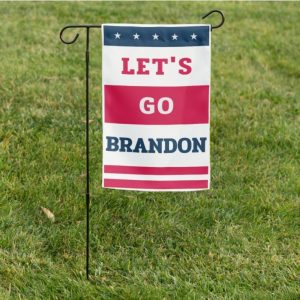
That plus an extension nesting box – for the ducks. This will not be partitioned – as I did for the chicken nesting boxes. Just a roughly 4×2 area for the female ducks to sit on their eggs and take care of their babies in a sheltered (from the other birds) space.
Finally, an egg production report: Even in the depth of winter, my eight hens still produce on average about 2-3 eggs daily. This ought to increase significantly as the weather warms.
The ducks, meanwhile, are almost worth their weight in silver. A store-bought duck costs $45 or more and is smaller than my ducks. The Muscovy males are close to the size of a wild turkey. Instead of a rare (due to the cost) treat, we’ve got ducks to eat regularly – for a fraction of that cost.
More to come . . . eventually!
. . .
Got a question about cars, bikes, or libertarianism? Click on the “ask Eric” link and send ’em in! Or email me at EPeters952@yahoo.com if the @!** “ask Eric” button doesn’t work!
If you like what you’ve found here please consider supporting EPautos.
We depend on you to keep the wheels turning!
Our donate button is here.
If you prefer not to use PayPal, our mailing address is:
EPautos
721 Hummingbird Lane SE
Copper Hill, VA 24079
PS: Get an EPautos magnet or sticker or coaster in return for a $20 or more one-time donation or a $10 or more monthly recurring donation. (Please be sure to tell us you want a magnet or sticker or coaster – and also, provide an address, so we know where to mail the thing!)
My eBook about car buying (new and used) is also available for your favorite price – free! Click here. If that fails, email me at EPeters952@yahoo.com and I will send you a copy directly!


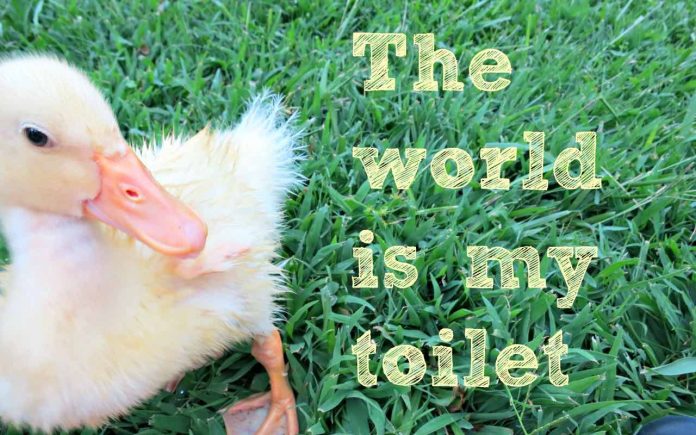









RE: Winter water setup.
I came across this method for rabbits but it looks like it could easily be adapted for chickens & ducks.
Peace & Plenty Homestead
‘The Best Rabbit Watering System Ever!’
https://www.youtube.com/watch?v=g0evI39kCHE
He uses a metal rain gutter and threads a pipe tape wire through some PVC with holes to keep the water thawed.
Maybe put a cap on the gutter of some kind with 3″ holes to drink from to keep it cleaner?
A simple garden valve at the end to drain it & some kind of overflow setup to direct water when it rains a lot?
Seems like it could run for a long time on a solar powered battery setup & match real well with a roof run off rain barrel system. It would likely be very low maintenance.
Hope that gives someone some ideas & I’m not talking to the wind.
Or, perhaps putting your water bucket inside a larger bucket might help? There are six gallon buckets (I have one made for making wine, I didn’t know they made them that size) or a small trash can? Zip tie a lid on it so it’s hinged?
If you did bury your bucket outside I’d definitely put it into a larger bucket & bury that, otherwise, how are you going to lift it out of the hole to change the water? Seems to me the bucket would freeze in the ground if it was simply put in a hole.
I have some six-cup sized rubber bowls for my rabbits which are suspended in the air in wire cages, this morning when the temp was about 20 degrees a thin layer of ice formed on top.
I had that same sized bowl inside a square on one side feed-bucket (with a big cutout on the square end & smaller-than-chicken-heads sized holes the rest of the way around to provide light, with a plastic zip-tied lid) attached to the outside of a wire dog crate where I have my guineas temporarily.
It sits on the ground in my coop. I doubt my coop is any warmer than where my rabbits are, the ground in the coop is deep litter and it is a tad warm’er than the air. The water in that bowl had no ice today. I don’t know if it being on the floor, in the coop, or in a bucket with a lid made the difference, it just did.
All that said, I still recommend an elevated box with a lid (and wire sides, with perches so they can reach the water) to set a water bowl into to keep your water much cleaner. The large rubber bowl inside that had no ice either, today. So, perhaps it’s the lid that makes the difference?
I used to have to change my water two or even three times a day because it became so filthy from the chickens walking in it. Now, if it doesn’t freeze, I can just water once per day. It stays very clean.
The smaller bowl setup for the guineas does get a little dirty, but it’s much better than just a bowl on the floor or a cut open vinegar bottle zip-tied to the sides.
Hope that was constructive input.
We had some record low temps this Winter here in Iowa, days with zero for a high & 20 below & lower for lows, mixed with lots of teens for highs. I didn’t heat anything in my uninsulated coop. The worst damage was the rooster got a little bit of frostbite on his comb, other than that, the flock did fine.
I wonder if the rubber water pans I use (inside the coop) freeze more slowly than plastic as most days the thin layer of ice on top was thin enough the birds could peck through & get some water in between waterings. I would only have to water twice per day & sometimes use a stick to break up the ice in the middle of the day. P.i.t.a. for sure.
I got a deeper rubber water pan I plan to use with a submersible heating element (once I run some wire for it) I imagine that’ll be more effective than the buckets with the heating element built inside of it.
While your coop is tiny, perhaps put the heated water bucket inside the coop for Winter? That may help significantly? I have read about guys burying water bowls into the composting litter inside a coop to keep it from freezing. That seems a bit messy to me but probably better than burying it outside, outside I can see no benefit to burying it.
I noticed you use round poles for perches, I have read it’s better to use the wide side of a 2×4 facing up so the birds can keep their feet flat & keep them warmer. My roosts are a bit long so I used 4×4’s as the 2×4’s bow over time.
I have been using the plastic wrapped wood chips sold in the farm store in place of hay. They seem to be about the same price & size & they seem to be less messy & easier to stack around & keep dry.
I have a big pile of leaves outside mixed with some grass from last fall, I gather a bucket full & put it on top of the wood chip litter during the week to stretch out the need for the wood chips. Once they have been pooped on a bit the leaves are definitely more messy than wood chips or hay.
The chickens seem to love scratching through the leaves & they eat some of the blades of grass which are still on the green side. Next year I’m thinking of having a pile of grass clippings to add to their Winter diet. It looks like I’ll have some good stuff for the garden this Spring.
Just in case anyone wondered. My rooster who got the frostbite last Winter… you couldn’t even tell he had it.
It’s kind of amazing, really. He looks like a perfect rooster.
… I have no worries about frostbite, extreem sub-zero temps & chickens.
…The garlic scapes are ready. It’s growing season. …hope you guys are at least dabbling in gardening, maybe at least a container or two to get your feet wet?
If not, here’s some motivation:
Appalachia’s Homestead with Patara
https://www.youtube.com/channel/UCXyRtDXzptYN56-UxNhYAbQ
You write so elegantly, sometimes, about stuff that isn’t. I enjoy your reports about self-sufficiency.
We’ve been looking at property that would allow us to do some of these things, too. I can’t decide if we should stay in our cold northern state where we have family (leftists totally invested in the plandemic but on speaking terms) or venture south. And we’re – older – but fairly fit. hmm. . .
Thanks, Snap!
It’s work – but it’s also very satisfying on several levels. Taking care of the birds; working toward self-sufficiency. Being in touch with the real world – literally, in touch. I recommend it if you’re able to do it.
From time to time, I think about this, ” You write so elegantly”.
I wish I had that talent. …Like drilling out a stripped spark plug hole. Some People can, some People cannot.
Anyway,… I wonder how Eric is coming along with his greenhouse. … And, does he ever try N sell his excess eggs?
I have too many chickens for ourselves, thinking of thinning the herd or getting more customers.
I wonder how many others have that, ‘problem’?
Also, are you guys following these two? They rock:
‘Off Grid with Doug and Stacy’
https://youtu.be/mtPpgfFx7GI